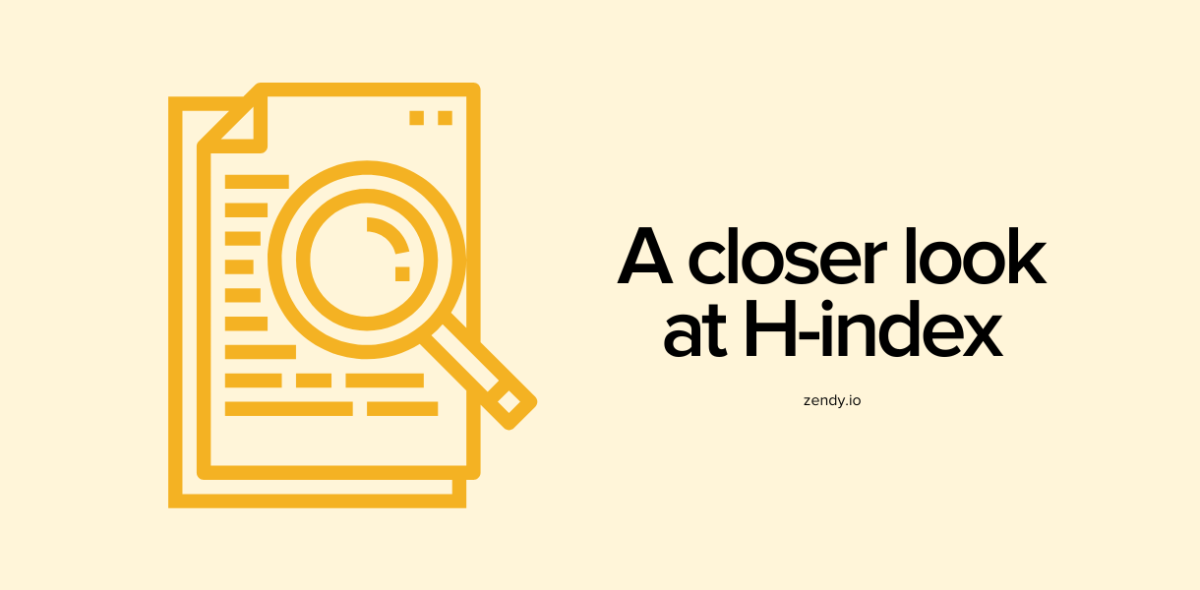Understanding H-Index
The H-index is a metric that measures an author’s productivity by the number of publications that have published their work and the impact of the work based on the number of citations their research receives. In general, authors with a higher h-index score will have produced more research and therefore published more content which, to their peers, creates their reputation of credibility.
This quantitative metric was brought about in 2005 by Argentinian-American professor of physics Jorge E. Hirsch to analyse publication data.
Finding an author’s H-index
There are multiple platforms on which you may find an author’s H-index score. To name a few, Google Scholar, Scopus, Web of science etc. However, in this blog, we’ll take you through the process of locating an author’s H-index on google scholar as shown below.
- Visit Google Scholar
- Enter the author’s name in the search bar
- If a profile exists for the author, it will appear at the top of the search results, click the author’s name, and their profile page will open.
- View their h-index on the right side of the screen.
Calculating H-Index Score
The H-index measures the importance, significance, and impact of research contributions. To calculate an author’s H-index, you’d need to create a list of all publications in which the author has been published and rank them in descending order of the citations his/her work has received. Understanding the H-index of an author is an indication of their credibility, so that brings us to the question:
What is a good H-index score?
J. E. Hirsch (2005) observes that Noble Prize winners in physics have an average H-index score of 30, this highlights that Noble prize winners are selected with a scientific body of research and a history of contributional impact. This proved that successful scientists do need a good h-index score.
Hirsch stated that after 20 years of research; an H-index score of 20 was good, 40 was outstanding and 60 was truly exceptional.
Does the H-index score evaluate an author in all important aspects?
Undoubtedly, it is appealing to have a singular value that measures an author’s productivity and impact. Many committees have opted the H-index as their metric of choice as well. Bordons and Costas (2007) stated that the key advantage of the H-index metric is that it measures the scientific output of a researcher with objectivity. This plays a vital role in making decisions about promotions, fund allocation and awarding prizes.
However, there are suggestions that H-index does not take other important variables into account. According to Enago Academy (2022), a higher H-index score does not indicate better quality of research. The article further elaborates that the H-index score does not account for an author’s career stage, research and journal quality and contribution to the scientific community. The score also has potential unintended negative impacts; for example, a younger researcher may not challenge a researcher with a high h-index score and researchers aiming for a higher h-index may only pursue popular fields of science.
Furthermore, BiteSizeBio (2021) states that the H-index score does not take into account the number of authors on a research paper. If a paper has 1 author with about 100 citations, this researcher deserves more recognition than a paper that had 10 authors with similar citations.
The fluctuation of the H-index score
The H-index score does not decrease unless the paper is redacted or deleted. Older papers may continue to gain new citations, and the h-index can potentially increase indefinitely, even after the researcher has stopped actively publishing.
What is the difference between H-index and the journal impact factor?
The Journal Impact Factor metric is used to evaluate the importance of a journal within its respective field or discipline. In simpler terms, it measures the frequency of citations the average article within this journal receives. On the contrary, the H-index metric is used to measure the productivity and quality of an author’s publications. While they are both measures of research quality, they measure different aspects of research and can therefore not be compared.
To conclude, having a good H-index score is impressive. However, every author’s research contrasts with that of another. There are many more aspects to investigate when evaluating a researcher.
Discover millions of e-books, journal articles, proceedings and more on Zendy.
